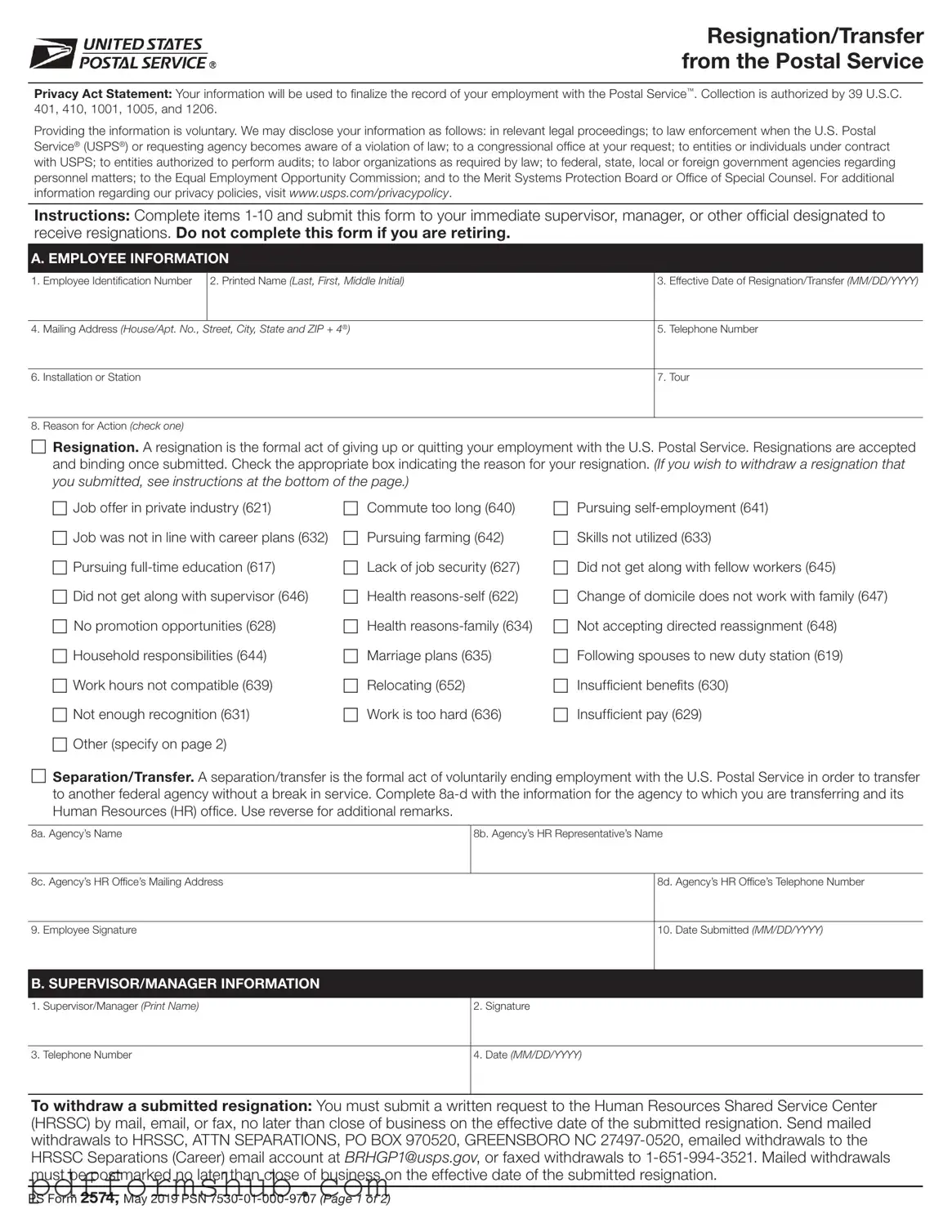The USPS Resignation Form is a critical document for employees of the United States Postal Service who choose to resign or transfer from their positions. This form serves multiple purposes, including finalizing employment records and ensuring compliance with various legal requirements. It collects essential employee information, such as the employee's identification number, name, effective date of resignation or transfer, and contact details. Additionally, employees must indicate their reasons for leaving, which range from pursuing other job opportunities to personal circumstances like health issues or family responsibilities. The form also outlines the process for withdrawing a resignation if circumstances change. Privacy is a significant consideration; the USPS outlines how the collected information may be disclosed under specific conditions, such as legal proceedings or to governmental agencies. Completing the form accurately and submitting it to the appropriate supervisor or manager is essential for a smooth transition out of the Postal Service. For those transferring to another federal agency, additional details about the new agency's HR contact must be provided. Understanding the nuances of this form is vital for employees navigating their departure from the USPS.
